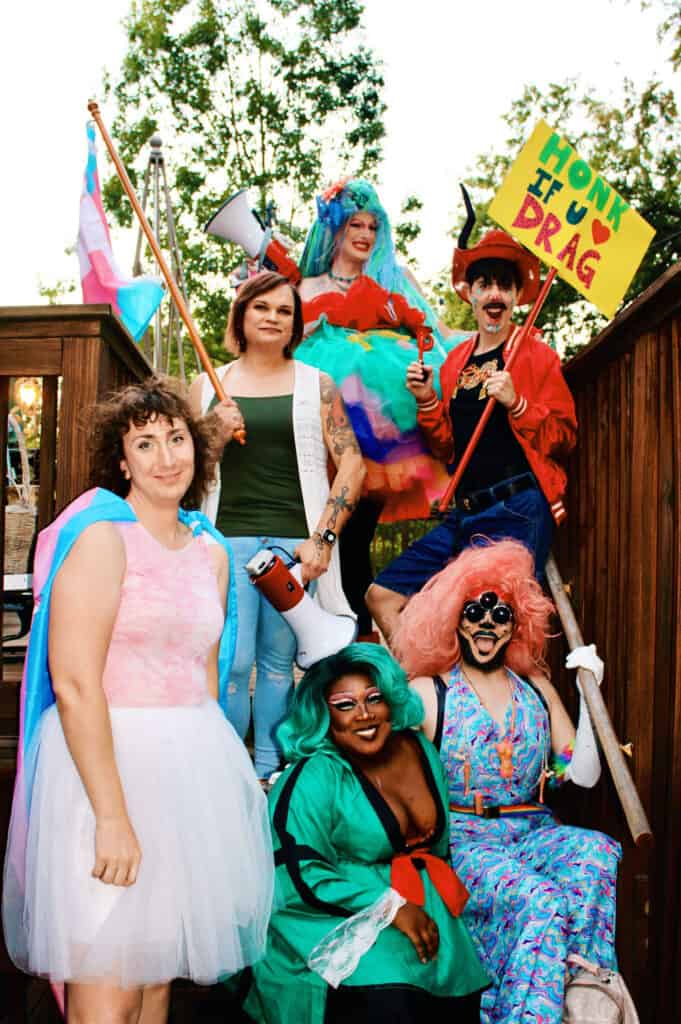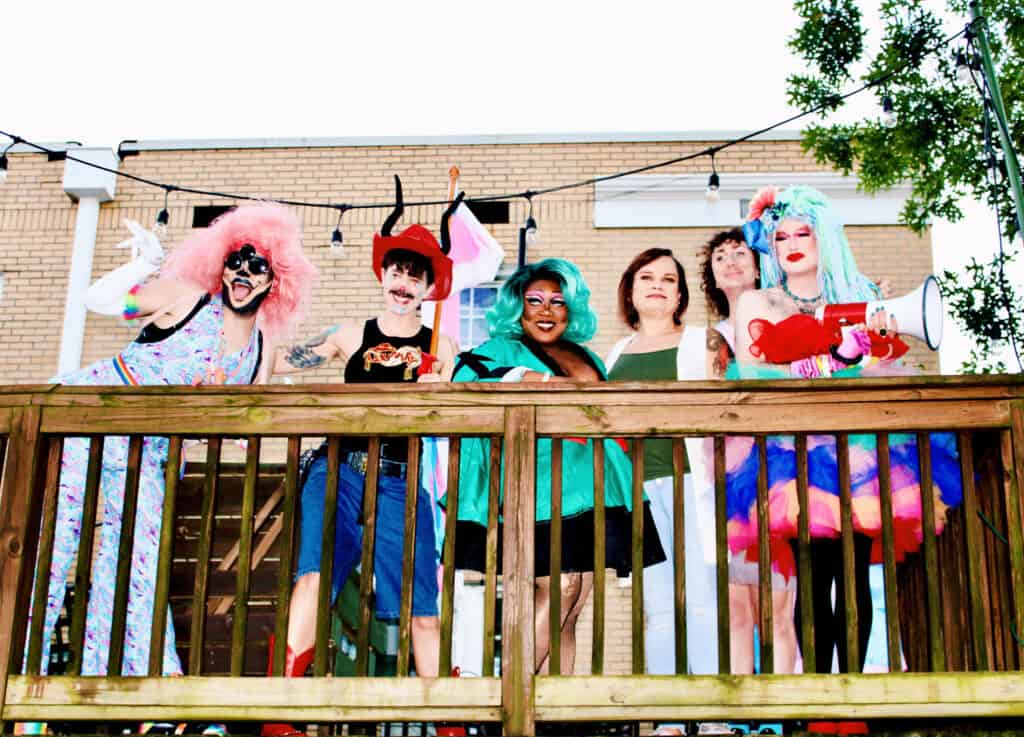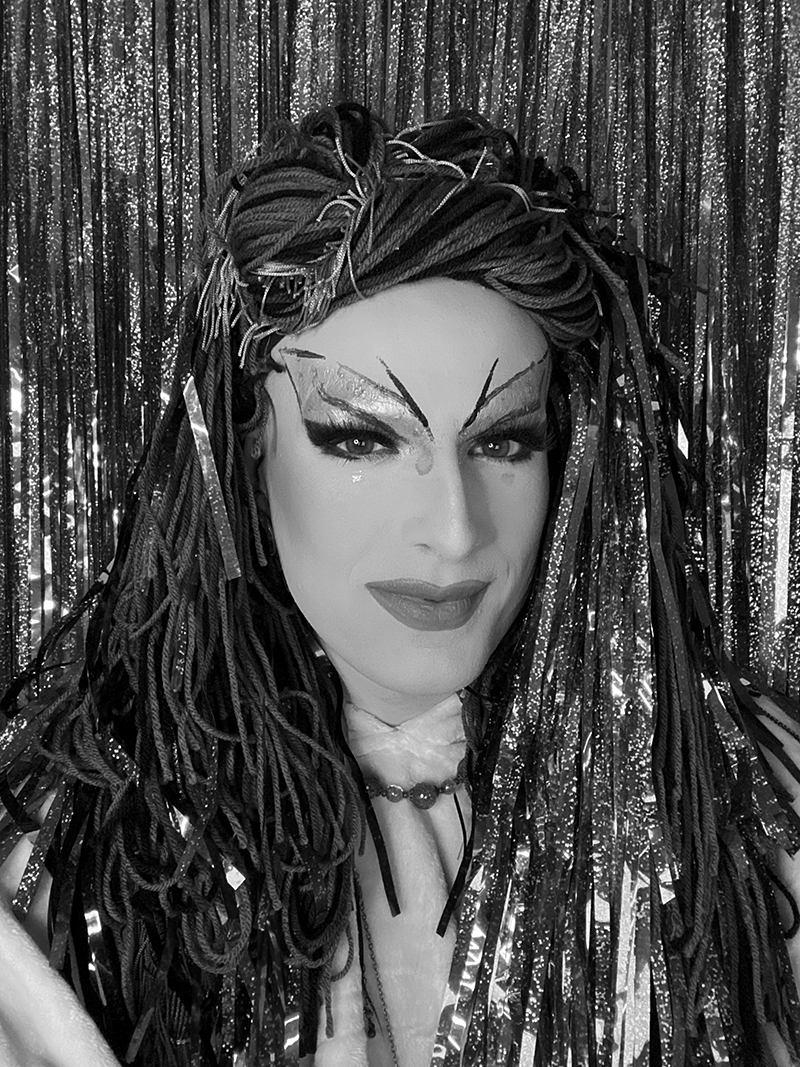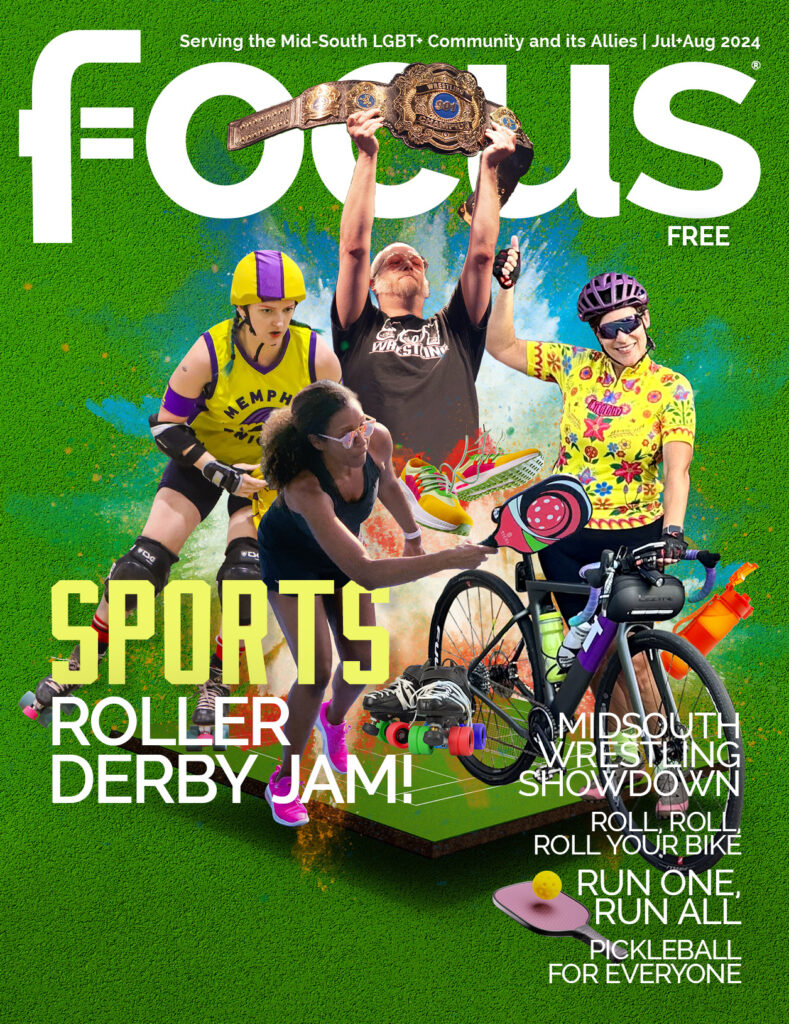by Moth Moth Moth | photos by Drew Parker
After the cancellation of the drag show to celebrate the closing of the Memphis Proud exhibit at MoSH last month, the LGBTQIA community in Memphis activated from all directions.
I, Moth, was not at the event. I was taking a night outta town to see a band. And trying not to hog all the spotlight when other entertainers deserved to be highlighted too.
After hearing the pain in my friends’ voices and messages, I couldn’t sleep on the way back home from Nashville.
That afternoon, I did a little drag show in the gallery of the soon gone exhibit. It was small and it was surely not enough, but it felt like, if nothing else that day, perhaps I got in the last word for our people. When I finished, I went home to process and to listen to friends who were processing the pain from their firsthand experience. I found myself in a place where it took time to really absorb the fright and to understand the gravity of what had occurred and the hard choice that had to be made.
So, I sat out and cried for a couple days. My friends had been getting death threats all month. Had something gone sideways, lives could have been lost. A veil of safety has dissolved for many members of the community. For some, the veil was never there. Our trans and PoC siblings in the community face daily threats of violence around the entire country but especially in the South. Still, the hardships were salt in wounds. Many wounds spanning the queer diaspora.
A “Drag March” suddenly became an organization effort overnight. By the time I sled into the circles and chats properly, so much groundwork had been laid and important questions answered.
The message of this march? A few things. With so much hurt in everyone’s hearts some of the main messages became: The right to express ourselves through dress, art, and performance without being terrorized for it. The right to safety for all queer people in the South who face violence and discrimination at higher rates. And the right for queer and trans people to exist in public spaces.
My friend Sairen put her body on the line to march with everyone. My friend Amaranthus Hyden is a warrior princess for the community. My friend Jenna Dunn is powerful with how she listens to people and brings them together. My friend Whitney is blessed with layers of perspective. My friend Shiloh is abundantly wise and cautious. My friend Salamander is someone who creates grace everywhere she goes.
Amaranthus and Jenna, in particular, had been making moves and bringing everyone and everything together the entire way. They have been superheroes to this community, and are committed to continuing the fight for our right to be and express ourselves, and live peacefully.

It took a garden of perspectives to bring this march, however imperfect, into existence. Every voice was of importance.
The week after the show cancellation due to the presence of armed protestors was spent planning in the shadows. Many members across the queer community and its many intersections prepared to march.
Many expressed fear that if something went sideways it would be those who are black or brown that would be the first to get hurt. In response, there was protection and marshals organized by the community. But there was also collaboration with the MPD, a small step in the long journey to heal from what read to much of the community as inaction that night on behalf of our safety.
Due to the optics, and also the quickness of the planning for the march, many felt too exposed to participate in the march. That fear and panic I read and heard in people’s phone calls and messages will be a needle in my heart forever.
“Mothie, what if they shoot us?”
I don’t have an answer for that. There is risk in drag. Drag is vulnerability on and off stage. Drag is the right to express freely through fashion and performance. And there is risk in protesting the atrocious way a group of people hostile to our peaceful way of life made us feel in our own city. To threaten us with shows of arms is dark and dystopian and distinctly unAmerican.
The day I decided to move to midtown was the day I saw a golden light gleaming on Poplar Avenue. Over the pavement, like a sea of fire spilling from downtown. Sometimes I see that light before something special. As I drove my little car with a bum wheel to midtown the day of the march, I was dressed like a tulle firework, and I caught that gleaming light coming over Poplar Ave. At 5PM we started to rally in Overton Square. And suddenly, I wasn’t afraid anymore. I saw legendary faces from the activist community. I saw Crystal Jo Casino’s beautiful red hair and smile. I saw people beginning to wave signs we’d painted that morning. It felt like a family get-together.
Megaphones in hand, at 6PM the march began. And it was smooth, but you could feel the rainbow rage of the crowd. Sizzling across the pavement, in joyful resistance but also honoring the anger and hurt. We know how to fight. Queer folks have to endure these awful things again and again and eventually they will be cast back. One day, we can sage the demons of homophobia and transphobia out of our sight. Through our peace and through intersectional demonstration.

At the end, many of us gave speeches including an eloquent and spooky- looking Barbie Wyre who spoke to the heart of the community about the harm that bigotry does to queer youth and the artistic spirit.
That day, we began the march at the rainbow crosswalk at the foot of Cooper Street. The original rainbow crosswalk on Young Avenue was our finish line.
A couple weeks later all the crosswalks at Cooper and Young were painted to create a rainbow square. Fantasia Bordeaux danced at the plaza, her magenta cape flapping in the air. A superhero. This town is full of them, all the time. Different people at different times. When I can’t wear a cape, Sairen will. If we are tired, Jenna and Amaranthus will carry us.
The march to the next rainbow is on. We have to hustle. Our safer and more peaceful world is just over there.




